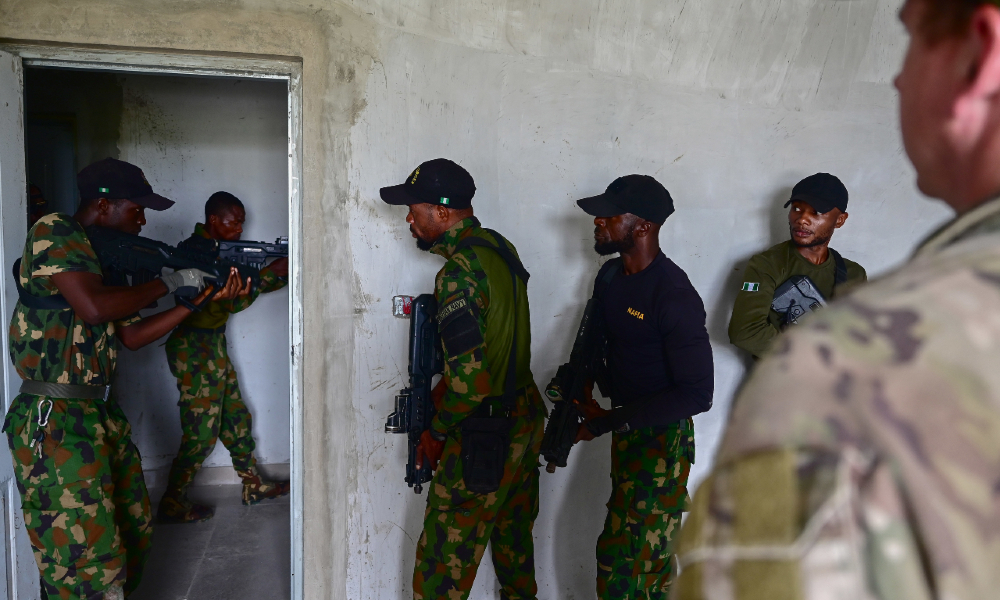U.S. Domestic Terrorism Is Increasingly Motivated by Partisan Politics

Published by The Lawfare Institute
in Cooperation With

Editor’s Note: One of the most alarming trends in terrorism is the growth in anti-government extremism. My Center for Strategic and International Studies colleague Riley McCabe presents his in-depth research on the rise of anti-government violence and how it has changed in recent years, going from opposition to federal authority in general to more partisan violence.
Daniel Byman
***
On Oct. 22, police arrested Jeffrey Kelly, whom they allege was behind three shootings targeting a Democratic Party campaign office in Tempe, Arizona. Police found a grenade launcher, body armor, 120 guns, and 250,000 rounds of ammunition in Kelly’s possession, including a machine gun in his car. The county deputy attorney said authorities suspect Kelly was “preparing to commit an act of mass casualty.” Kelly’s case is only the most recent example of the growing threat of domestic extremists motivated by partisan political beliefs.
The research I conducted for the Center for Strategic and International Studies (CSIS) reveals that, since 2016, there has been a dramatic rise in domestic terrorist attacks and plots against government targets motivated by partisan political beliefs. This includes attacks and plots against elected officials, political candidates, political party officials, political staff and workers, and their offices by terrorists with opposing political views.
The record is damning. From January 2016 to April 2024, there were a total of 21 domestic terrorist attacks and plots against government targets motivated by partisan political beliefs, compared to a total of just two such incidents in the more than two preceding decades tracked in the CSIS dataset. These partisan political motivations were tracked as distinct from other ideologies, such as anarchism, Salafi-jihadism, white supremacy, and general anti-government sentiment. Increased levels of polarization and the mainstreaming of violent political rhetoric probably contribute to this rapid increase in partisan attacks.
Conspiracy theories, particularly election denialism, are also a primary driver of this trend. Less than two weeks after the attack on the U.S. Capitol on Jan. 6, 2021, two men devised a plan to destroy the John L. Burton Democratic Headquarters in Sacramento because they believed the 2020 presidential election was rigged. More than a year and a half later, on Oct. 28, 2022, David DePape broke into the San Francisco home of U.S. Speaker of the House Nancy Pelosi, seeking to hold her hostage, and attacked her husband. DePape was motivated by a mix of conspiracy theories, including that Nancy Pelosi and other Democrats were responsible for undermining the integrity of the 2020 presidential election. After losing his race in the November 2022 midterm elections, Solomon Peña, a former Republican candidate for the New Mexico House of Representatives, allegedly orchestrated a series of shootings targeting the homes of Democratic politicians whom he blamed for manipulating the vote.
As the United States braces for the 2024 elections, there is a serious risk that extreme polarization and the spread of conspiracy theories about election integrity will motivate political extremists to take violent action. In the near term, authorities and election workers are taking unprecedented steps to prepare for potential violence on and around Election Day. In Arizona, some election workers will count ballots in buildings fortified by new fences and concrete barriers while police patrol the area with drones and rooftop snipers. In several counties across the country, election workers have been trained to use naloxone nasal spray in case they receive fentanyl-tainted ballots. In the long term, the rising domestic terrorist threat against government targets motivated by partisan political beliefs warrants continued efforts to increase protective security measures for elected officials, political candidates, political party officials, and political staff and workers.
Evolution in Ideology and Organization
The rise in attacks and plots motivated by partisan political beliefs represents a significant shift in the ideologies and organization of anti-government terrorists, according to the CSIS data. From 1994 to 2004, 71 percent of attacks and plots against government targets were inspired by general opposition to federal authority, spearheaded by the American militia movement. This movement was motivated primarily by fears of federal overreach, targeting what they viewed as encroachments on individual liberties. Their perceived enemy was typically the federal government itself, rather than particular political groups or parties. Today, however, anti-government terrorists are more focused on targets across the political aisle. From 2016 to 2023, only 29 percent of domestic terrorist attacks and plots were inspired by general opposition to government authority, and a remarkable 49 percent were inspired by partisan political views.
The organization of anti-government terrorists has also changed over time. Although groups are responsible for a few recent terrorist attacks and plots in the United States, such as the Wolverine Watchmen who plotted to kidnap Michigan Gov. Gretchen Whitmer in 2020, the vast majority of anti-government incidents since 2016 have involved radicalized individuals with no material ties to any group. This finding is consistent with recent assessments from the FBI and Department of Homeland Security. As the FBI’s 2021 Strategic Intelligence Assessment and Data on Domestic Terrorism report stated, “The greatest terrorism threat to the Homeland we face today is posed by lone offenders, often radicalized online, who look to attack soft targets with easily accessible weapons.”
Low Casualties in Anti-Government Attacks
Despite the many terrorist attacks and plots against government targets, such incidents have resulted in remarkably few deaths since 9/11. In the past 23 years, only four victims have been killed in attacks on government targets, excluding attacks on military and law enforcement targets, which were coded separately in the CSIS dataset. This phenomenon is probably attributable to three main factors. First, in the past 30 years, nearly 75 percent of all anti-government attacks have occurred at government buildings or political offices, which are often protected by physical fortifications and security personnel. Second, perpetrators who attack government targets are usually motivated by specific political grievances, leading them to target only one or a small number of specific individuals rather than indiscriminately killing bystanders. Third, such perpetrators typically lack the weapons and tactical training to maximize their impact.
Although terrorist attacks against government targets have been largely unsuccessful in causing mass casualties, there have also been several close calls that suggest a highly lethal event is still possible. For example, the response of police officers during the 2017 shooting at a congressional baseball practice targeting Republican lawmakers undoubtedly saved many lives. However, it was also to some extent a matter of luck that those shot at, including the four people wounded by gunfire, were not killed. This event and others like it emphasize the need not only for increased security measures but also for a review of existing protocols in the event of a successful attack. In addition to ensuring stability in governance during crises, plans for such contingencies can disincentivize terrorist attacks against government targets.
Despite their low fatalities, the increase in domestic terrorist attacks and plots against government targets motivated by partisan political beliefs can have a politically chilling effect. The Democratic office attacked by Jeffrey Kelly this month has reportedly shut down. In addition to campaign staff and election workers, voters, demonstrators, political candidates, and elected officials alike must now grapple with this increased threat. The heightened risk of terrorist attacks motivated by partisan beliefs does not just endanger individual lives but also threatens the democratic process itself, casting a shadow over open discourse and discouraging civic engagement. As the political landscape grows more polarized, safeguarding democratic institutions and protecting those who participate in them have become crucial not only for security but also for the preservation of democratic ideals in the United States.

.jpg?sfvrsn=d36c11fb_3)



